We use information collected through cookies and similar technologies to improve your experience on our site, analyze how you use it and for marketing purposes.
Your privacy settings
We and our partners use information collected through cookies and similar technologies to improve your experience on our site, analyze how you use it and for marketing purposes. Because we respect your right to privacy, you can choose not to allow some types of cookies. However, blocking some types of cookies may impact your experience of the site and the services we are able to offer. In some cases, data obtained from cookies is shared with third parties for analytics or marketing reasons. You can exercise your right to opt-out of that sharing at any time by disabling cookies.
Manage Consent Preferences
Necessary
Always ON
These cookies and scripts are necessary for the website to function and cannot be switched off. They are usually only set in response to actions made by you which amount to a request for services, such as setting your privacy preferences, logging in or filling in forms. You can set your browser to block oralert you about these cookies, but some parts of the site will not then work. These cookies do not store any personally identifiable information.
Analytics
These cookies and scripts allow us to count visits and traffic sources, so we can measure and improve the performance of our site. They help us know which pages are the most and least popular and see how visitors move around the site. All information these cookies collect is aggregated and therefore anonymous. If you do not allow these cookies and scripts, we will not know when you have visited our site.
Embedded Videos
These cookies and scripts may be set through our site by external video hosting services likeYouTube or Vimeo. They may be used to deliver video content on our website. It's possible for the video provider to build a profile of your interests and show you relevant adverts on this or other websites. They do not directly store personal information, but are based on uniquely identifying your browser and internet device. If you do not allow these cookies or scripts it is possible that embedded video will not function as expected.
Google Fonts
Google Fonts is a font embedding service library. Google Fonts are stored on Google's CDN. The Google Fonts API is designed to limit the collection, storage, and use of end-user data to only what is needed to serve fonts efficiently. Use of Google Fonts API is unauthenticated. No cookies are sent by website visitors to the Google Fonts API. Requests to the Google Fonts API are made to resource-specific domains, such as fonts.googleapis.com or fonts.gstatic.com. This means your font requests are separate from and don't contain any credentials you send to google.com while using other Google services that are authenticated, such as Gmail.
Marketing
These cookies and scripts may be set through our site by our advertising partners. They may be used by those companies to build a profile of your interests and show you relevant adverts on other sites. They do not store directly personal information, but are based on uniquely identifying your browser and internet device. If you do not allow these cookies and scripts, you will experience less targeted advertising.
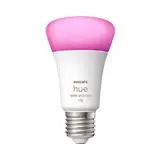
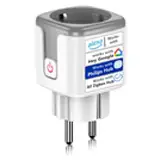
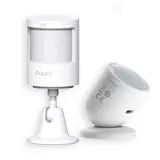
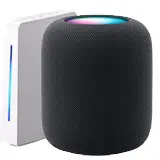
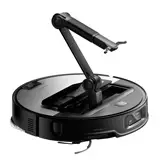

Future homes: what will they be like in 2030?
Can you imagine what your house will be like in 2030? Get ready for a future full of technology, sustainability, and comfort! The houses of the future will not only be places to live, but also smart spaces that will adapt to our needs and help us live more efficiently and ecologically. Forget what you know, because the future of housing is just around the corner.
Smart Homes: The Brain of the Home
Artificial intelligence (AI) will be the heart of the home of the future. Imagine a home that learns your routines, anticipates your needs, and adapts to your lifestyle. It's not just about turning lights on and off with your voice, but a comprehensive system that manages energy, security, and entertainment.
Voice and Gesture Control
Voice control is going to be a lot more sophisticated. You'll be able to interact with your home naturally, just by speaking. The AI will understand your intentions and carry out your commands without you needing to press any buttons or use touchscreens. Plus, gesture recognition technology will let you control devices with hand movements, offering an even more intuitive experience.
Advanced Automation
Automation will go beyond just scheduling tasks. AI systems will analyze real-time data to optimize energy consumption, adjust the ambient temperature based on weather conditions, and ensure home security. For example, blinds will close automatically to provide shade in the summer, and lights will turn on when motion is detected at night.
Sustainability: A Planet-Friendly Home
Future houses will be much more sustainable and environmentally friendly. Energy efficiency and the use of renewable energies will be priorities, contributing to reducing the carbon footprint and creating a greener future. The goal will be energy self-sufficiency and minimizing environmental impact.
Integrated Renewable Energies
Solar panels will no longer be an aesthetic addition, but an integral part of house design. They will be integrated into facades, roofs, and windows, maximizing solar energy capture. Furthermore, energy storage systems, such as batteries, will be used to guarantee the electricity supply even on cloudy days. Other renewable energy sources, such as geothermal and small-scale wind energy, will also be explored.
Ecological Materials and Sustainable Construction
Future home construction will rely on eco-friendly materials and sustainable building techniques. Recycled, renewable, and low-impact materials such as wood, bamboo, cork, and biodegradable materials will be used. Modular and prefabricated construction, which reduces waste and construction time, will be prioritized. Sustainable building certification, such as LEED or BREEAM, will be sought.
Vertical Gardens and Green Roofs
Vertical gardens and green roofs will become increasingly common in the homes of the future. These solutions not only improve the building's aesthetics, but also contribute to improving air quality, reducing the urban heat island effect, and creating a more favorable microclimate. In addition, they can serve as urban gardens, allowing for the cultivation of fresh food at home.
Flexible and Customizable Design: Your Home, Your Way
Future homes will adapt to the changing needs of their inhabitants. The flexible and customizable design will allow interior spaces to be modified according to circumstances, creating multifunctional environments adapted to every moment of life. Versatility and adaptability will be prioritized.
Modular and Transformable Spaces
Moving walls, multifunctional furniture, and smart storage systems will allow for quick and easy transformation of interior spaces. A living room can become a guest bedroom in a matter of minutes, and an office can transform into a children's play area. Dimmable lighting systems and zoned temperature control will be used to create personalized environments.
3D Printing and Extreme Personalization
3D printing will revolutionize home construction, allowing for the creation of personalized homes quickly and affordably. Walls, furniture, and decorative elements can be printed with unique designs tailored to individual tastes. 3D printing will also facilitate home construction in remote or hard-to-reach areas.
Nature Integration Indoors
Biophilic design, which aims to connect people with nature, will be a key element in the homes of the future. Natural materials, such as wood and stone, will be used, and plants and water features will be incorporated indoors. Natural lighting and cross-ventilation will be prioritized to create healthy and comfortable environments.
Health and Wellness Technology
Future homes will look after the health and well-being of their inhabitants. Health monitoring systems, circadian lighting, and spaces designed for rest and relaxation will contribute to improving quality of life and preventing disease. Technology will serve well-being.
Home Health Monitoring
Sensors embedded in mirrors, toilets, and floors will monitor vital signs such as blood pressure, heart rate, and sleep quality. Data will be analyzed using AI algorithms to detect potential health problems and alert users and their doctors. Online medical consultations can be conducted from home, thanks to telehealth systems integrated into the dwelling.
Circadian Lighting and Relaxing Environments
Circadian lighting will mimic the natural rhythms of sunlight, adjusting the intensity and color of light throughout the day to improve mood, energy, and sleep. Dedicated spaces for rest and relaxation will be created, featuring immersive sound systems, aromatherapy, and chromotherapy. Materials and colors that promote calm and tranquility will be used.
Air and Water Purification
Air and water purification systems will remove contaminants and ensure indoor air quality. HEPA filters will be used to remove fine particles, pollen, and allergens from the air, and reverse osmosis systems will purify drinking water. Humidity and temperature will be controlled to create a comfortable and healthy environment.
Home Security of the Future
Security will be a priority in the homes of the future. Advanced surveillance systems, biometric access control, and cybersecurity protection will ensure the safety and security of the dwelling and its occupants. Technology will be used to prevent theft, fires, and other incidents.
Intelligent Surveillance and Intrusion Detection
Security cameras with facial recognition and motion sensors will detect any suspicious activity and alert users and authorities. AI systems will be used to distinguish between false alarms and real danger situations. Cameras and sensors can be remotely controlled via a mobile app.
Biometric Access Control
Access to the housing will be through facial recognition, fingerprint, or iris scanning systems. Physical keys will be eliminated, preventing the risk of theft and identity theft. Temporary access can be granted to family, friends, or service personnel via a mobile app.
Cyberattack Protection
Smart homes will be protected against cyberattacks using advanced computer security systems. Firewalls, antivirus software, and intrusion detection systems will be used to protect personal data and prevent remote control of the home by hackers. Regular security updates will be performed to keep systems protected against the latest threats.
Recommendations and Best Practices
Want to prepare your home for the future? Here are some recommendations:
Conclusion
The homes of the future promise to be smart, sustainable, flexible, and secure spaces, designed to improve our quality of life and protect the planet. Technology will play a fundamental role in the transformation of housing, but design and personalization will remain important to create homes that adapt to our needs and lifestyle. The future of housing is full of possibilities, and it's exciting to imagine what our homes will be like in 2030. In addition, the emerging technologies in the smart home will enable optimal use of energy resources, promoting a greener environment. As we move towards 2030, we are likely to see an increase in the integration of automated systems that not only improve efficiency, but also anticipate our daily routines. Thus, our homes will not only become shelters, but proactive allies in caring for our well-being and the environment.
What are your thoughts on the houses of the future? What features seem most interesting to you? Share this article and leave us your comments!
Related Posts
The future of the smart home: trends, technologies and perspectives (2025-2030).
Smart home technology is rapidly transforming our daily lives. Find out what our homes will look like in 2030 and why it is important to prepare for these innovations today. What is a smart home in 2025? Today, technologies such as Zigbee, Matter and Thread dominate the market thanks to their stability and compatibility with multiple devices. ...
10 incredible houses of the future that will change the way we live
Technology and architectural design are advancing rapidly, allowing us to dream of futuristic homes that once seemed impossible. Here are 10 amazing concepts of houses of the future that could soon become reality. 1. Bubble house Transparent homes that integrate with nature, equipped with intelligent systems for perfect climate control. 2. Underground houses ...
Artificial intelligence in smart homes: present and future
Imagine coming home after a long day. The lights softly come on, your favorite song starts playing, and the temperature is perfect. No, it's not magic, it's artificial intelligence in your smart home! Artificial Intelligence and Smart Homes: The Comfort Revolution Artificial intelligence (AI) is transforming the way…